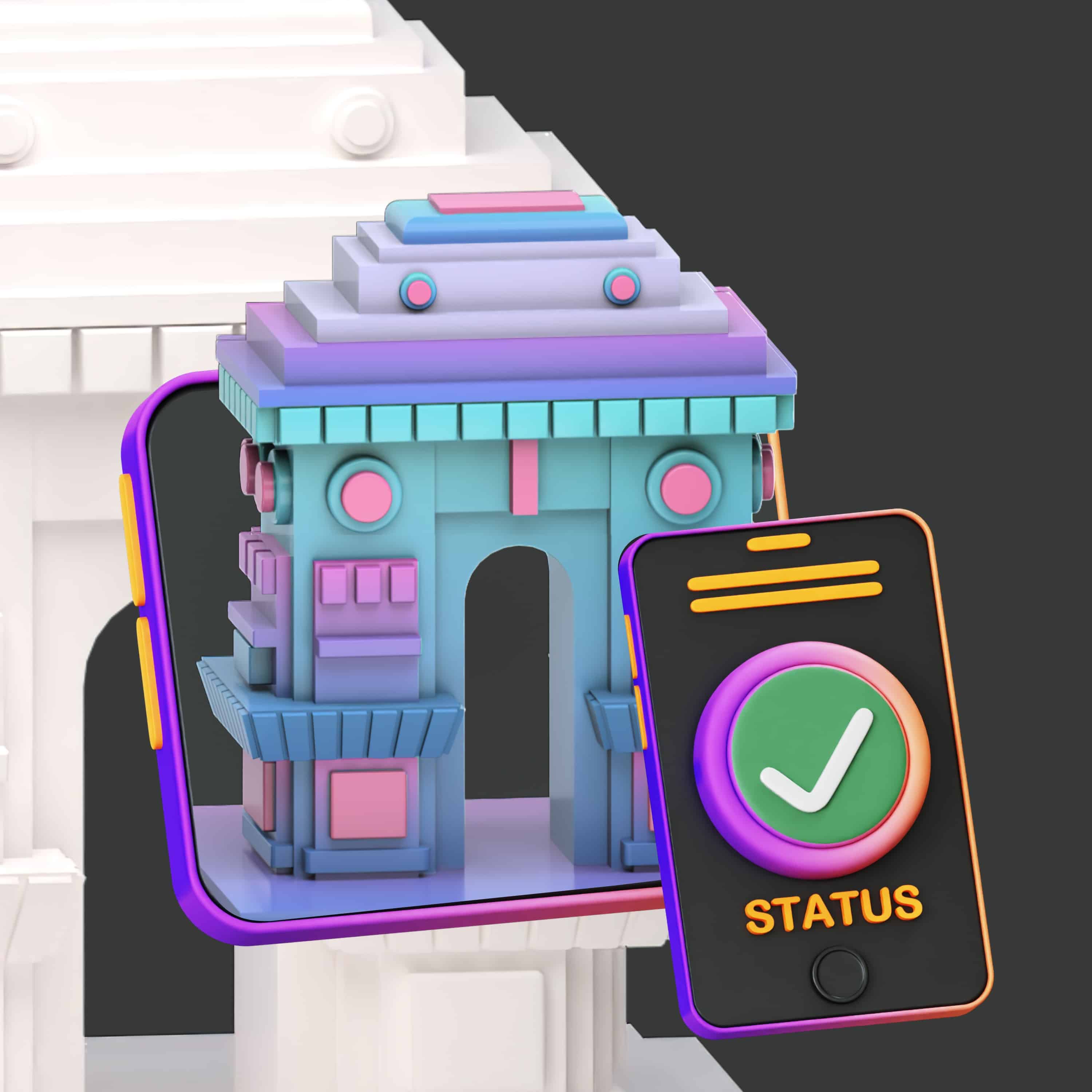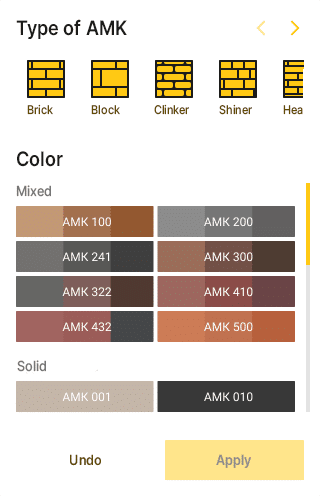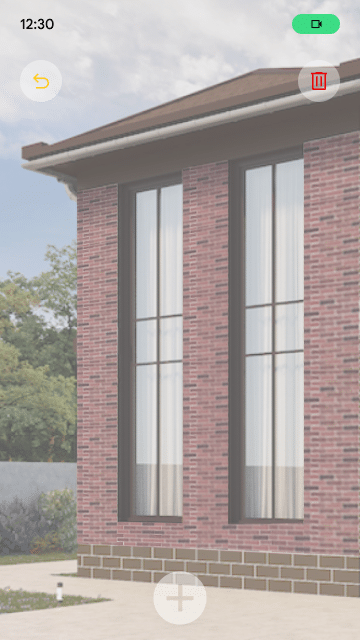In brief
-
01
Client
a facade manufacturer
-
02
Business goals
- To attract new customers;
- To incline the users to purchase.
-
03
Solution
to develop an AR application helping to fit a coating for walls
-
04
Outcomes
- The application allows to try on a facade on a house;
- It works on the latest smartphone models without requiring a great amount of memory;
- The AR system works flawlessly on one-storey and two-storey houses.
The company makes money selling facades
The company called AMK manufactures and sells facade systems for houses, i.e. a coating for the cladding of buildings, meant to beautify and protect the building from bad weather conditions. They are mounted on the wall with the help of glue in a simple and quick way.
The company’s online shop offers a wide range of coatings, e.g. a brick texture. One can choose a color and masonry type, and buy a special glue and installation tools.
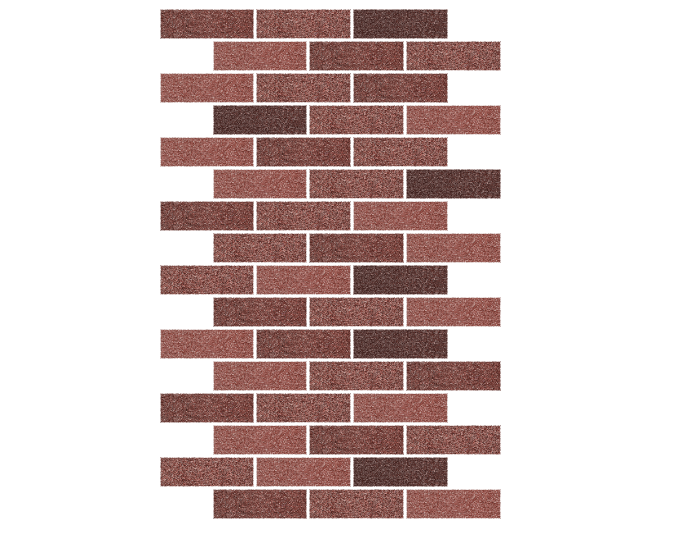

The company ventured out to try a new way to attract customers
Potential buyers are sometimes unaware of the way the covering will fit their house. They can check it out only after buying and mounting it. Undoubtedly, it can be done in a graphics editor, but people may struggle with working in it and taking photos of the house from multiple angles (including a bird’s eye view) in advance.
The company founder suggested using augmented reality for this purpose. He took inspiration from the way AR is used to choose trainers. One can open an app, choose any pair, point the camera at their legs, and see the way the trainers look on their feet.
The CEO wanted the AMK’s facades to be tried on the house, similarly to a pair of trainers. This way one could open an app, turn on the camera, select the boundaries of walls and windows and take a look at the facade after mounting coverings of various colors and textures.
The company approached OrbitSoft since we had launched an online shop for their merch. So, we willingly rose to the challenge.
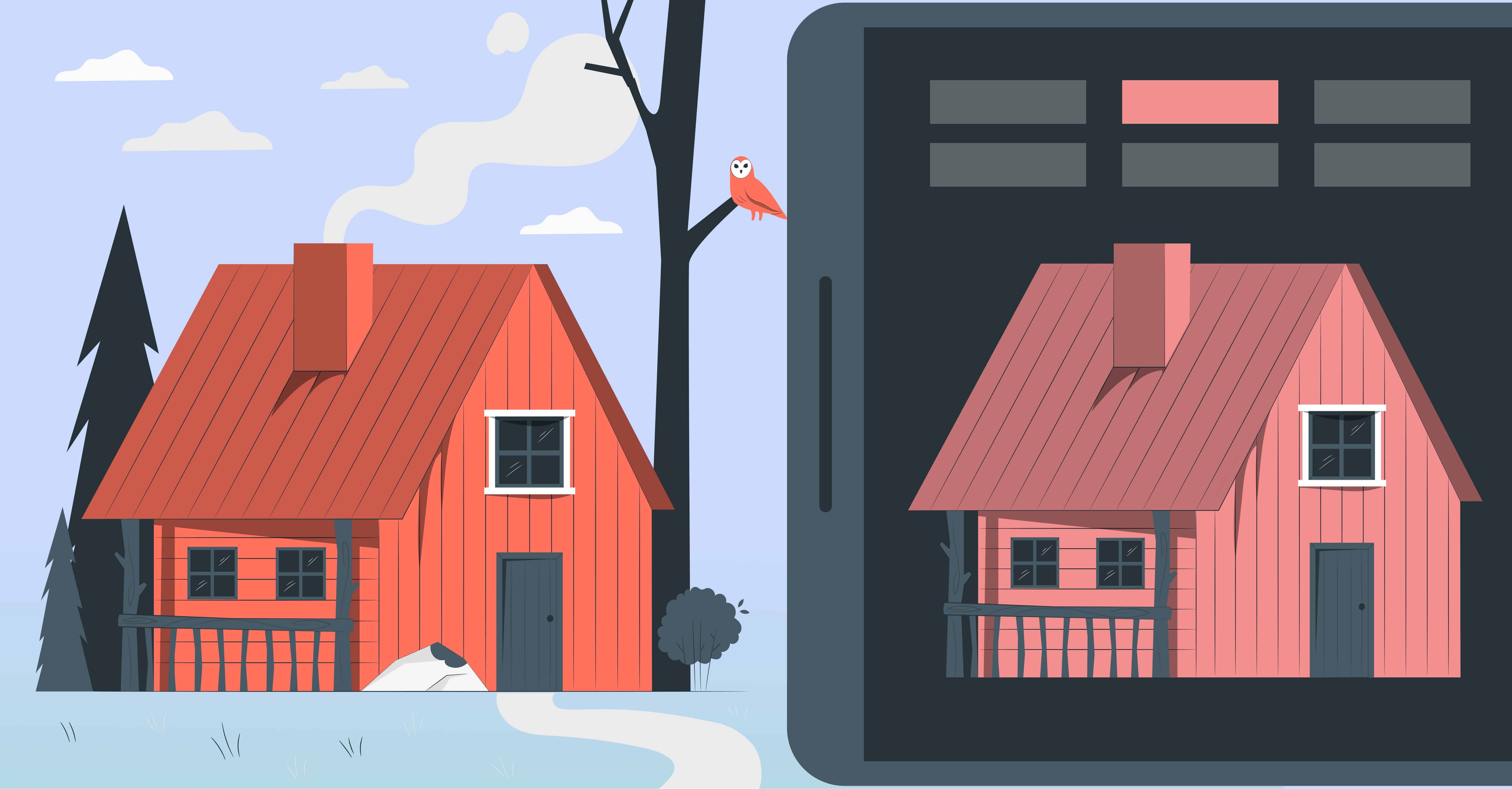
AR applications will be of great use for a wide range of business areas. They’ll help enhance user experience, increase work efficiency and attract new customers.
| Business area | Idea for an app |
| Retail | To try on clothing and accessories virtually before the purchase |
| Beauty industry | To choose a makeup or hairstyle |
| Entertainment industry | To boost the engagement level into the game scenario |
| Interior design | To see the way a piece of furniture or decor will fit the interior |
| Logistics and storage | To help find items in the warehouse |
| Education | To create interactive lessons, virtual tours and models for enhancing visual instruction |
| Medicine | To educate medicine students, simulate surgeries and virtualize medical data and scans |
| Marketing and advertising | To create interactive ad campaigns |
| Architecture and engineering | To visualize projects and check out their conformity to the real construction site |
In one of our previous articles we showcased the app development for watching VR videos.
We have created an AR application for a smartphone
We had no precise technical specifications in our disposal. The client offered us only his great excitement about an AR application and the example with trainers. So, first things first, we needed to study similar projects and make up the appropriate technical specification.
We thought up the application vision and logic. AR applications have been in the market for a long time, and it is vital to create a new one with habitual for a user patterns.
We have studied similar projects, such as Measure iOS, Yandex search through AR camera, Ikea Place, Planner 5D. Each application has a rather simple working principle. The camera gets turned on automatically at opening the application. Later on the user chooses an object and sees the way it aligns with the surrounding reality.
We selected and studied the technology. It is vital to build an engine, i.e. the program interacting and complementing the camera. Only this way the application will function. While selecting an engine, we made sure it had ready-made code libraries for augmented reality. It helped us simplify and accelerate the development process. Unity appeared to be the right option, according to these criteria.
We have studied Unity documentation to figure out the way objects are defined by the engine and camera, surfaces and scenarios work. We have also studied ARFoundation documentation. This is a Google tool, transmitting information about the real world to the engine. The tool gathers this info via camera.
We built the engine. It solves three tasks:
- It defines vertical surfaces in AR, i.e. the walls of the building, on which the user is trying to fit the coating.
- It finds all the points on the vertical surface. At this stage, the engine defines where the windows and walls are located to account for while fitting the coating. The engine also anchors (remembers) all the surfaces the user has chosen.
- It creates a vertical object on the surface, i.e. places the chosen coating on the walls of the house.
While developing the app, we struggled with defining the window borders. The algorithms we tried out functioned inconsistently for some inexplicable reason. For example, when we chose a window or a door, the borders would be defined inaccurately and the structures wouldn’t be overlaid properly. We took some time searching for the answer on the Unity forum and found other libraries. This way we eventually solved the issue.
We developed the design. We made sure the application logic worked. One can switch on their camera, select a zone, and the app will understand where the walls of the building are. Afterwards, we got down to developing the application design.
We selected references from popular AR-applications on App Store and Google Play. Then we passed over to studying the requirements for the realization of the AR interface, according to iOS and Android guidelines. This way developed the design:
- The interface is simple and consistent. It leads the user to achieving the result, excluding any issues.
- The interface itself does not distract the user from their goal.
- The elements, figures, colors and texture correspond to the corporate style of the company. The user can feel they are inside a part of the product ecosystem.
We gathered the whole user’s journey, beginning with the loading screen and ending with the purchase order stage. Additionally, each screen provides the user with info on what should and may happen at this stage.
Eventually, we introduced the application to our customer and handed it in to their developers.
The way the AR application for fitting facades works
Having tried on the facade on their house, the user can go to the company’s online shop and select the chosen coating.
The application does not require a big amount of memory and works flawlessly. At the beginning of the development we could foresee struggling with several issues. All the AR applications work within 3 meters, and it’s enough for the visualization of small objects, like a pair of shoes. Yet, the wall of the building is located within no less than 5 meters, consequently, the camera fails to identify all the borders. Nevertheless, our application works flawlessly on one-storey and two-storey houses.
The application has a camera limitation. It is supposed to identify and retain the house borders, but the cameras of older smartphone models consider the whole picture to be the background and they fail to distinguish between the darker and the lighter parts, for example the window against the wall. This is the reason why the app works only on particular smartphone models.
We are testing the application in the summer of 2023 in order to define its capabilities. Our team is also working on publishing it on App Store and Google Play. The next stage is to promote the app with current functionalities. We are also to work on adding the functionalities of an online store so that the user could purchase right in the app, without visiting the website.
